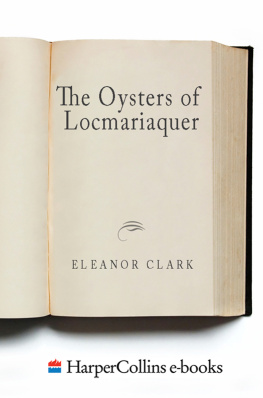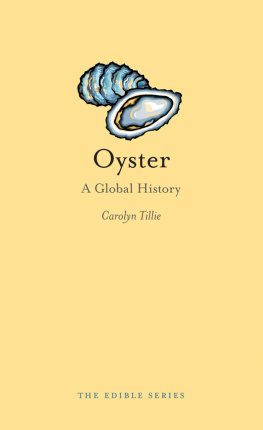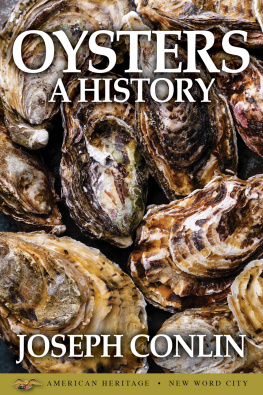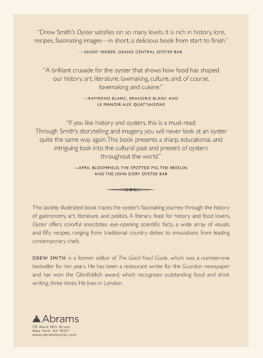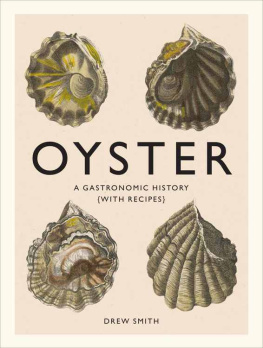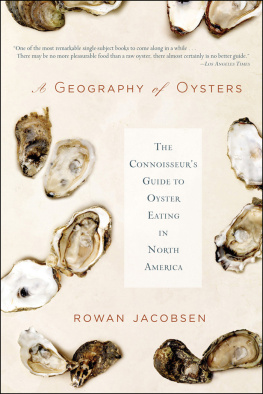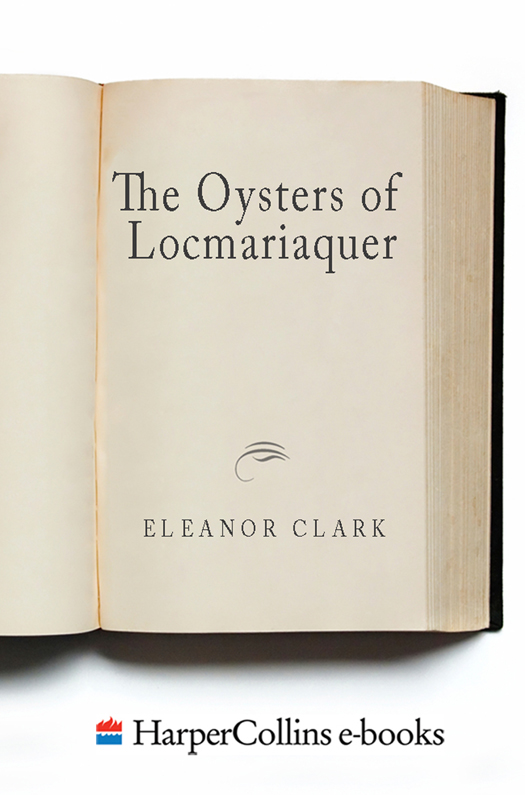TO
Red
Contents
The oyster is a classical character.
JOHN R. PHILPOTS
Canst tell how an oyster makes his shell?
No.
Nor I neither.
King Lear
On the zoological side, the books most exploited for this journey of interrogation have been Oysters by C. M. Yonge (London, 1960), and Les Hutres by G. Ranson (Paris, 1951). The object of the drama related in Chapter Three is Les Hutres du Morbihan by Pierre Dalido (Paris, 1948). To these works among many the author is greatly indebted. The American scientists of our time whose writings have been most illuminating on the animal in question are Paul Galtsoff, V. L. Loosanoff, and the late T. C. Nelson, to be read in various scientific journals and in the publications of the Fish and Wildlife Service, U. S. Department of the Interior.
Most exceptional and heartfelt thanks are due to Dr. Louis Marteil, of the Institut Scientifique et Technique des Pches Maritimes in Auray. His generous help many times over the past three years has amounted to a one-sided cultural exchange dictated by nothing but kindness and courtesy. No government could have arranged it; no person could repay it. He is in no way to be associated with any errors there may be in the final product. To Professor Edward Deevey of the Department of Biology, Yale University, and to Peter Matthiessen the author is also deeply grateful, for corrections and suggestions and the charity of time spent on the manuscript. For any remaining faults they are of course not responsible either.
The nature of the book has made it unruly in at least one regard. Because of its own exigencies of tone, which may be obvious enough to serve as an apology, the rule of italics for scientific names has been broken.
IT IS A CURIOUS AND, to writers, troubling fact that it is almost impossible to predict the work for which an author will be remembered. The Oysters of Locmariaquer, published in 1964 and winner of a 1965 National Book Award, is Eleanor Clarks most remembered book. This is somewhat surprising because Clark, a protge of Katherine Anne Porter, was generally described as a fiction writer. In reality the oyster book was one of three such travel books. Her earlier book, Rome and a Villa, was also widely praised. She also wrote a memoir. Her fiction output was only slightly greater, a novella and short story collection and four novels.
Clark was married to Robert Penn Warren. It said so on every book flap and in every biography. Even today in online listings of her available books this is often the only information given about the author. Yet Robert Penn Warren, himself a National Book Award winner, was seldom identified as the husband of Eleanor Clark.
Her first novel, The Bitter Box, had been published in 1946. Nearly two decades later, when The Oysters of Locmariaquer won its stellar and immediate recognition, Clark was fifty-one years old and had not yet written the two novels that were to be her crowning achievements, Baldurs Gate (1970) and Gloria Mundi (1979). Both were set in smalltown New England, which is where she spent most of her life.
But The Oysters of Locmariaquer is set in Brittany, the Celtic peninsula in the northwest of France. Clark had spent a summer in Brittany as a child and returned for several months to write this book. France in the 1960s was a very different country than France today. In Brittany there were few televisions, the prized possessions of the wealthy, people referred to as gros richards. Oystermen did not own televisions. Today someone might pick up this book and brace themselves for that anglophone affliction of the mindfrancophilia. But this book is not a precious description of the quaint and lovely peasants of rural France who do everything a bit loveliera book in the tradition of Alice B. Toklas. Clark embraced France without sentimentality, telling sad stories with grace, humor, and a sense of lifes ironies.
The southern coast of Brittany has long been one of the poorest regions of France, one of the first to try to eek out a living on Parisian tourism, on the promotion of souvenirs reflecting colorful costumes and curious folkways praised by such Paris literati as Honor de Balzac.
If the oystermen of Locmariaquer were a hard luck story, so were their oysters. The oyster is the Ostrea edulis, sometimes called the European flat oyster. These particular oysters are known as Belons after the mouth of the Belon river, which had long produced some of Europes best oysters. By the time Clark was doing her research, the Belons of the Belon had already largely disappeared and nearby Locmariaquer was supplying the shipping point in Riec-sur-Belon.
Oysters, like wines, are to a large degree a reflection on where they are grown. North Americas Atlantic Coast provides a wide range of oysters, including the fat, bland oysters of Louisiana and the Gulf of Mexico; Florida oysters; Chesapeake Bay oysters; Blue Points of Long Island; Wellfleets of Cape Cod; and the small, strong-flavored oysters from Nova Scotia to Labrador. But this assortment of shellfish that fill menus and delight gourmetslarge, small, briny, sweetare all biologically identical. They are the Crassostrea virginica. Variations in temperature, salinity, and available food account for the differences.
But there are considerable biological differences between Crassostrea virginca and Ostrea edulis. Principally there are tremendous differences between Crassostrea and Ostrea, which are different biological families, live in different conditions, and even reproduce differently. They also look different. Ostrea is flat and round, whereas a Crassostrea is thicker and more oval shaped, even banana or broad-bean shaped when not cultivated.
Clark says, The Crassostrea would seem to be the gluttons of the tribe. Crassostrea lives in brackish, less salty water of estuaries where it finds huge food supplies. The Ostrea needs saltier water and live further out. In comparing the climatic differences of the ranges, one fact seems obvious: Crassostrea, which can flourish from the subtropical waters of Florida and the Gulf of Mexico to the subarctic of Labrador, is a far more versatile, heartier animal than the Ostrea, which lives from southern Scandinavia to northern Spain. And that is why Crassostrea, not only the Crassostrea virginica of North America but the Crassostrea angulata, the Portuguese oyster, is taking over and the more delicate Ostrea is vanishing. As the Ostrea disappear, beds of Crassostrea are planted. Today on both coasts of America, in Europe, and in most of the world, Crassostrea is the dominant family. This is a sad fact not only because one more hallmark of European culture is vanishing but because the Ostrea edulis is an extraordinarily delicious oyster, an oyster as rough as a taste of the sea, yet so delicate a taste, as Montaigne said of Bordeaux oysters, that it is like smelling violets to eat them.
More recently than Clarks book, Belons have been farmed in Maine, but a Maine Ostrea edulis no more resembles an Ostrea edulis from Brittany than a Crassotrea virginica from the Chesapeake resembles one from Nova Scotia. The oyster is part biology and part geography.
And so with both the oyster and the oystermen disappearing, there is a sorrowful fatalism to Eleanor Clarks book. Perhaps, she suggests, after all, like the backward culture that still makes it possible, like the vanishing forests or any other general beauty of America, it is just an anachronism. Both quaint and prescient the book remains relevant, though it is amusing to read about the threat of the ubiquitous Howard Johnsons taking over the world. The sadness would be. unbearable except that the authors wit keeps readers chuckling in spite of themselves.

